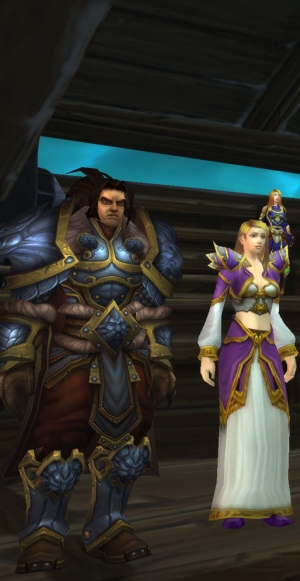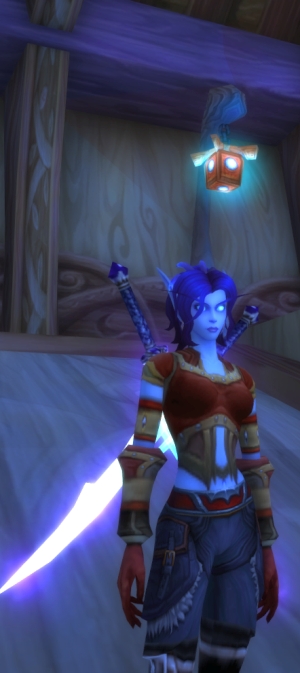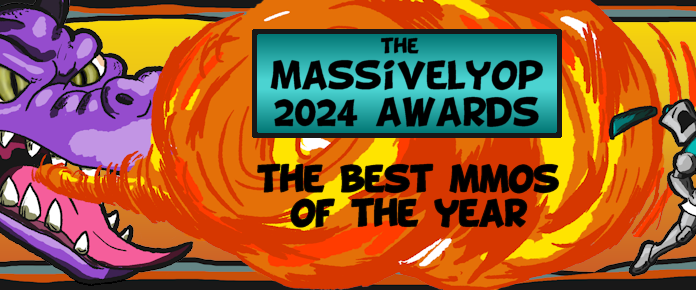
Watching as speculation and mining swirls around the Mag’har as a future allied race, I can’t help but start thinking about the bigger picture in World of Warcraft. Because soon we’ll be able to make another couple of allied races, and we’ll have more on top of that, and it brings up a pretty good question: what, exactly is the Alliance at this point?
You might think that’s a silly question, but both the Alliance and the Horde are kind of nebulous political groupings, and their extant members are a pretty big deal when you’re speculating about who’s going to be next to sign on board. Plus, I think it helps a bit to consider what could be coming in the future, both for future customization options and further development.
So, then, let’s start with the Alliance, because it’s first alphabetically and a bit simpler to put together. What actually comprises the Alliance?
Member nations
 For our purposes, we’re defining “member nation” as a nation with a head of state, a population, and claims to some amount of land whatever the status of those claims. A lot of those claims might be contested, but at the end of the day, these are full-on nations and treated as such.
For our purposes, we’re defining “member nation” as a nation with a head of state, a population, and claims to some amount of land whatever the status of those claims. A lot of those claims might be contested, but at the end of the day, these are full-on nations and treated as such.
Stormwind: Obviously. Rescuing the nation of Stormwind was the original goal of the Alliance, and while a lot has changed over the years, it’s never ceased to be a member.
Gilneas: Lore buffs are quick to point out that Gilneas was one of the nations involved in the Second War, but you have to be really nitpicky to recall that Gilneas actually wasn’t part of the Alliance then. The Gilneans didn’t join up until the Cataclysm and after the Worgen curse had spread through the populace. At this point, however, the proud people of Gilneas are one of the backbones of the Alliance.
Kul Tiras: It’s weird how little of Kul Tiras we’ve actually seen, considering how important it is to the Alliance as a whole. Not only has it been a member since the Second War, Jaina Proudmoore is Kul Tiran and was arguably the head of the entire Alliance for quite some time. Yet we’re only really seeing Kul Tiras for the first time in Battle for Azeroth. One can assume that the nation has been a silent partner in the Alliance for a while, so to speak, providing a backbone of food and shipping while the other nations actively made war.
The Kal’dorei: When you have what you consider a complete monopoly on a portion of the world for an extended period of time, you tend to stop thinking in terms of capitals and names of nations. There isn’t really a good name for the Night Elf nation, it’s just… Night Elves. All of them.
Bronzebeard Clan: Ironforge! The Bronzebeards have always been the most gregarious of the Dwarven groups, and not much has changed since the Dwarves first joined the Alliance back in the Second War.
Wildhammer Clan: Another, rowdier group of Dwarves who also joined the Alliance during the Second War, the Wildhammers are less about digging and machinery and more about hunting and wildlife. The Wildhammers were a bit more aloof between the end of the Second War and the forming of the Council of the Three Hammers, but they’ve always been allies.
Dark Iron Clan: Complex hereditary antics means that the current head of the Dark Irons is Moira Bronzebeard… probably. The clan has never fully accepted that fact, which is why you still see lots of dissident Dark Irons about and why they’ve never had as much of a presence in the Alliance as a whole.
Gnomeregan: Technically, this nation barely holds a claim to anything beyond its own boundaries, and it no longer even actually holds that region. But they’re still part of the Alliance.
The Draenei: All right, this is stretching the definition of claiming boundaries; the Draenei don’t really want land so much as they want a place to continue living. The islands they’ve claimed are mostly theirs because the Night Elves are fine with them being there. All the same, they’re clearly a nation, just like the Gilneans, and I imagine they’re eager to start settling in a bit more now that the Legion is sort of gone.
Member organizations
 While organizations may or may not have a head and/or their own bylaws, by definition, they’re not full nations. This also isn’t counting groups that are part of the Alliance simply by virtue of their existing nation. Case in point, the expeditionary forces in Outland are composed mostly of members that were already part of the Alliance military; they might have their own reputation bars, but they’re functionally part of the Alliance already.
While organizations may or may not have a head and/or their own bylaws, by definition, they’re not full nations. This also isn’t counting groups that are part of the Alliance simply by virtue of their existing nation. Case in point, the expeditionary forces in Outland are composed mostly of members that were already part of the Alliance military; they might have their own reputation bars, but they’re functionally part of the Alliance already.
Tushui Pandaren: Yes, this playable race is just an organization! Technically these are part of a larger Pandaren society on the Wandering Isle, but no one seems terribly concerned with that distinction any longer. The Pandaren are welcome members of the Alliance, but their “leader” is more about having a voice than any sort of directed position.
Nobundo’s Broken: A lot of the Broken followed Farseer Nobundo onto the Exodar, and even now there’s a sizable population of the Broken among the Draenei. They aren’t exactly seen as separate from the Draenei, but they also aren’t quite part of the Draenei as a whole. It’s a somewhat gray area.
The Kurenai: Similarly, the Kurenai still see themselves as allied with the Draenei. They also see themselves as not quite Draenei any longer, and so they have a separate position.
Highborne of Dire Maul: This one is weird just because it’s not really explicitly sectioned off from the rest of the Night Elves, but technically the Mages among the Kal’dorei belong to this group of researchers who split off without heading over to the Eastern Kingdoms. They’re largely reintegrated at this point, but historically they’re still somewhat separate.
The Silver Covenant: A group of High Elves based around Dalaran in Northrend and in Icecrown, the Silver Covenant is notably different from the Sunreavers because, well, they don’t actually have a nation any more. Silvermoon doesn’t set their marching tune, but neither does anyone else.
Assorted Quel’dorei: This covers stuff like the Quel’danil lodge and various other High Elves still kicking around. Much like the Silver Covenant, these guys aren’t actually part of a nation but are still part of the Alliance as a whole, or more specifically they just never left. There aren’t many of them at this point, either.
Pearlfin Jinyu: Press-ganged into military service during the campaign in the Jade Forest, the Pearlfin Jinyu never really asked to be a part of anything. They still got brought into the Alliance, though, and that’s where they still are. It’s unclear if they’re really a nation or if they’re still even consulted on things, and we haven’t seen them around for some time.
The Ren’dorei: Void Elves are a group of people exploring the Void who got a little closer to it than intended. They’re now loosely led by Alleria Windrunner, but it’s not altogether clear if they really have any sort of government. It should be pretty clear here that Elves have kind of porous government anyhow.
Others
 Yes, a category for things that are somewhat weird in their distinctions.
Yes, a category for things that are somewhat weird in their distinctions.
Lordaeron: Lordaeron is still, technically, part of the Alliance. It is also going to be a hard sell as one, since the nation has been eaten out from within by the Forsaken and it no longer really has any occupants who aren’t part of the Scarlet Crusade and/or undead. Calia Menethil has a claim to the throne, but she seems disinterested in exercising that. So for now, Lordaeron is technically part of the Alliance, but it’s an empty nation.
Stromgarde: Picking apart what the deal is with Stromgarde is unclear at best. Like Lordaeron, a good chunk of it is undead and serves Sylvanas, but enough remnants of the nation exist that it’s not quite as straightforward as “this nation was part of the Alliance but is now all dead.”
Yrel’s Draenei: It’s not really clear how much movement between the alternate Draenor and Azeroth actually takes place. That’s the only way you’d know about how many of the Draenei on alternate Draenor are actually involved in the Alliance. Yrel seems content to remain with her people there, and while they are indisputably a nation, you’d be hard-pressed to really see them as a separate part of the Alliance as a whole. Or, if they’re there, they kind of are just… Draenei.
The Lightforged: The Lightforged, by their estimation, are also just Draenei. They don’t really see themselves as being much more than physically altered. Sure, they have a different commander, but that doesn’t mean they see themselves as distinct from the rest of the Draenei. So to their eyes, they’re… well, not really separate at all.
So where does all of this leave us? Well, at a glance, I think it’s important to note that most of the groups within the Alliance already have their playable race represented. The only groups that don’t are High Elves and Jinyu, and both of them are questionable in terms of population and their overall membership.
That means any new races would probably come from outside, and… well, that’s in stark contrast to the Horde, but we’ll piece that together in next week’s column. For now, feedback may be left below or sent by mail to eliot@massivelyop.com.
 War never changes, but World of Warcraft does, with a decade of history and a huge footprint in the MMORPG industry. Join Eliot Lefebvre each week for a new installment of WoW Factor as he examines the enormous MMO, how it interacts with the larger world of online gaming, and what’s new in the worlds of Azeroth and Draenor.
War never changes, but World of Warcraft does, with a decade of history and a huge footprint in the MMORPG industry. Join Eliot Lefebvre each week for a new installment of WoW Factor as he examines the enormous MMO, how it interacts with the larger world of online gaming, and what’s new in the worlds of Azeroth and Draenor.












